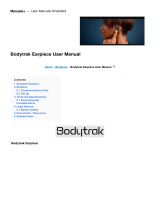
14
where and how to drop off your EEE waste, please
contact your local authorities, retailer or household
waste disposal service or visit the website
http://consumer.huawei.com/en/.
Reduction of hazardous substances
This device and any electrical accessories are compliant
with local applicable rules on the restriction of the use of
certain hazardous substances in electrical and electronic
equipment, such as EU REACH, RoHS and Batteries
(where included) regulations, etc. For declarations of
conformity about REACH and RoHS, please visit our web
site http://consumer.huawei.com/certification.
EU regulatory conformance
Body worn operation
The device complies with RF specifications when used
near your ear or at a distance of 0.5 cm from your body.
Ensure that the device accessories, such as a device case
and device holster, are not composed of metal
components. Keep the device away from your body to
meet the distance requirement.
Certification information (SAR)
This device meets guidelines for exposure to radio waves.
Your device is a low-power radio transmitter and
receiver. As recommended by international guidelines,
the device is designed not to exceed the limits for
exposure to radio waves. These guidelines were
developed by the International Commission on Non-
Ionizing Radiation Protection (ICNIRP), an independent
scientific organization, and include safety measures




















